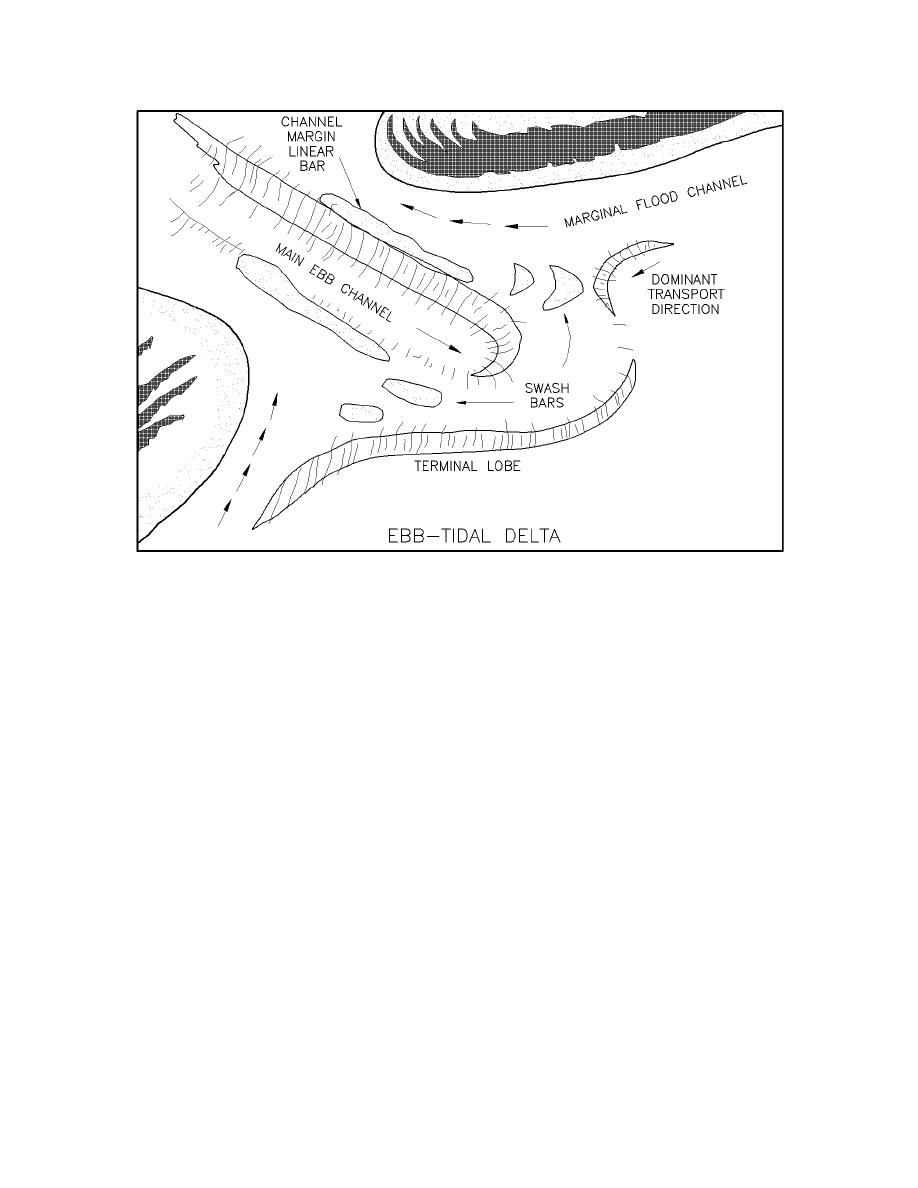
EM 1110-2-1100 (Part II)
30 Apr 02
Figure II-6-2.
Typical ebb-tidal delta morphology (Hayes 1980)
d. Inlet flow patterns.
(1) An inlet has a "gorge" where flows converge before they expand again on the opposite side. Shoal
(shallow) areas that extend bayward and oceanward from the gorge depend on inlet hydraulics, wave
conditions, and general geomorphology. All these interact to determine flow patterns in and around the inlet
and locations where flow channels occur.
(2) Typical flood and ebb current patterns on the ocean side of a tidal inlet are shown in Figure II-6-10.
The important aspect of this general circulation pattern is that currents usually flow toward the inlet near the
shoreline (in the flood channels), even on ebb tide. The reason for this seeming paradox is the effect of wave-
driven currents, (on the downdrift side of the inlet, breaking waves are turned toward the inlet due to
refraction over the outer bar and on breaking, create currents toward the inlet). Further downdrift, currents
are directed away from the inlet (an example of this is given in Figure II-6-11) and the effect of the ebb jet
convecting or entraining ocean water as it exits the inlet creates an alongshore current at the base of the ebb
jet. The "sink" flood flow pattern of the previous flood tide flow's momentum also helps sustain this flow
pattern. Figure II-6-12 shows ebb and flood flow patterns from a model study of Masonboro Inlet, North
Carolina, for both pre- and post-jetty conditions. Figure II-6-13 shows strength and direction of wave-
generated currents plus tidal currents approaching a jetty at an inlet as measured in a physical model study.
Figure II-6-14 shows the complexity of sediment flow patterns at an inlet as resolved by a field study at Essex
River Inlet, Massachusetts (Smith 1991). Ebb and flood flow patterns are discussed in detail in Part II-6-2,
paragraph j, Tidal jets.
II-6-4
Hydrodynamics of Tidal Inlets


 Previous Page
Previous Page
